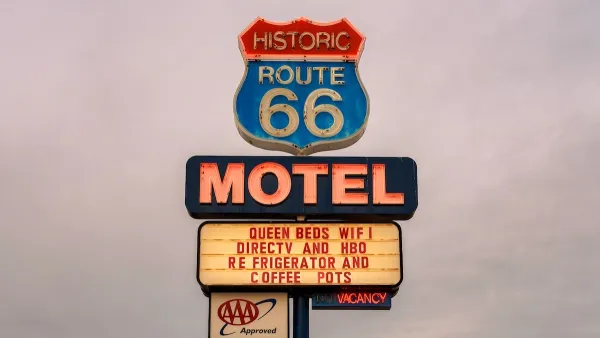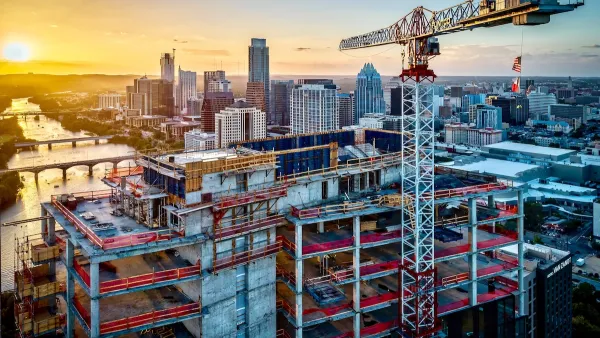Plans were recently revealed for the much-ballyhooed High Line Park in New York, converting an abandoned elevated railway into a recreation area. But the NY Times says, 'I’d been hoping for a utopia. Instead, I got sumac.'
"...I was struck by the banality of the plans unveiled. The idea, come to at great expense and after much fanfare, is essentially to plant some native shrubs (the same shrubs that have been colonizing the structure since the last train ran on it, in 1980) and thread a path through them. I'd been hoping for a utopia. Instead, I got sumac. The plan's most exciting element is a big glass panel that would allow people on 10th Avenue to look up and see the pedestrians on the High Line. This, plate glass and sumac, provides the city with absolutely nothing it doesn't already have in abundance.
What a waste. The High Line is in many ways a metaphor for the heterogeneity of New York, and an ideal plan should reflect that. It joins two neighborhoods that have been in historic opposition: Greenwich Village, the historical heart of bohemia, and Midtown, a center of global capitalism and corporate culture. To span the gulf, it runs through a largely defunct slaughterhouse district, a gallery district, low-income housing projects, the center of gay Manhattan and heaps of old warehouses. Can't this be a place to dream?"
FULL STORY: High Line, Low Aims

Planetizen Federal Action Tracker
A weekly monitor of how Trump’s orders and actions are impacting planners and planning in America.

Maui's Vacation Rental Debate Turns Ugly
Verbal attacks, misinformation campaigns and fistfights plague a high-stakes debate to convert thousands of vacation rentals into long-term housing.

Restaurant Patios Were a Pandemic Win — Why Were They so Hard to Keep?
Social distancing requirements and changes in travel patterns prompted cities to pilot new uses for street and sidewalk space. Then it got complicated.

In California Battle of Housing vs. Environment, Housing Just Won
A new state law significantly limits the power of CEQA, an environmental review law that served as a powerful tool for blocking new development.

Boulder Eliminates Parking Minimums Citywide
Officials estimate the cost of building a single underground parking space at up to $100,000.

Orange County, Florida Adopts Largest US “Sprawl Repair” Code
The ‘Orange Code’ seeks to rectify decades of sprawl-inducing, car-oriented development.
Urban Design for Planners 1: Software Tools
This six-course series explores essential urban design concepts using open source software and equips planners with the tools they need to participate fully in the urban design process.
Planning for Universal Design
Learn the tools for implementing Universal Design in planning regulations.
Heyer Gruel & Associates PA
JM Goldson LLC
Custer County Colorado
City of Camden Redevelopment Agency
City of Astoria
Transportation Research & Education Center (TREC) at Portland State University
Jefferson Parish Government
Camden Redevelopment Agency
City of Claremont





























